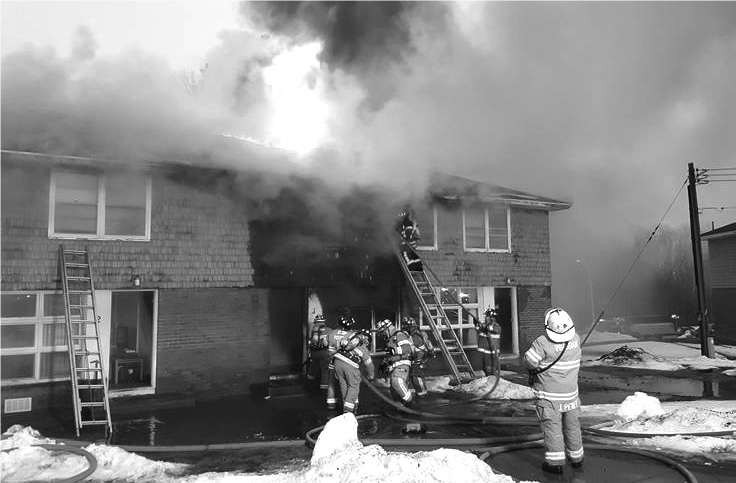Fire Damages Clarkson Dormitory
On the eve of Tuesday, March 28, flames flickered across the skyline of Clarkson’s campus as one of the riverside dormitories was ravaged by fire. The building, which held four separate apartment units, was part of the complex of Clarkson University’s Riverside Apartment Dormitories.
The fire, which broke out at approximately 7 p.m., largely destroyed the unitary dormitory building. Photos show flames ominously licking the front of the structure.
The dormitory was previously the home of 13 upper-class Clarkson students, all of whom have had to be relocated in the week and a half since the fire. Luckily, no one was injured in the event. Clarkson representatives have since informed the Watertown Daily Times that all of the students have been moved to the Clarkson Inn, and they will soon be relocated to more permanent student housing.
Although the cause of the fire has yet to be confirmed by the local fire department, the president of Clarkson University, Anthony Collins, stated that the original report appeared to indicate that the fire began as a grease flare up in one of the apartment’s kitchens.
Three separate fire crews were called to the scene on Tuesday night. They hailed from Potsdam, Norwood, and West Stockholm.
While firefighters originally evacuated only the tenants of the enflamed dormitory building, they later removed all students from the five other units as well. Fortunately, the other buildings in the complex, all of which look out over the Raquette River, were not damaged. The other five buildings were thus deemed safe the same evening, and all their residents were able to return to their homes soon thereafter.
This fire, which originated in a seemingly innocuous grease flare-up in a student’s kitchen, calls into question whether SLU will alter their current Fire Safety Procedures in any way. In the fall of 2016, two separate fires plagued our own campus; while both were contained and did not wreak extensive damage, they did cause campus officials to step up campus safety procedures. Although the fire in Clarkson is unrelated, it does generate a slew of questions regarding how the St. Lawrence administration will respond: will there be some altering of our own practices in an effort to prevent any future dormitory fires?
In response to this, Pat Gagnon, Assistant Vice President of Safety & Security and Emergency Management, says, “We, along with Student Life, Safety Committee, and the Emergency Planning Team, continue to promote fire safety programing and safety information whenever possible. Cooking causes many alarms at St. Lawrence University also. Our greatest challenges have been finding smoke detectors being covered in rooms and the destruction of 28-30 exit signs. Exit signs are in place to assist with egress during emergencies.”
In addition, the fire has generated a lot of concern for Clarkson students here at SLU. Noah Beliveau ’18 states, “I was deeply saddened to hear of the recent fire that occurred on Clarkson’s campus. Times like these make you re-evaluate what rivalries truly mean, and I know that both myself and other SLU students are extending our sympathies to those students affected by this incident.”



